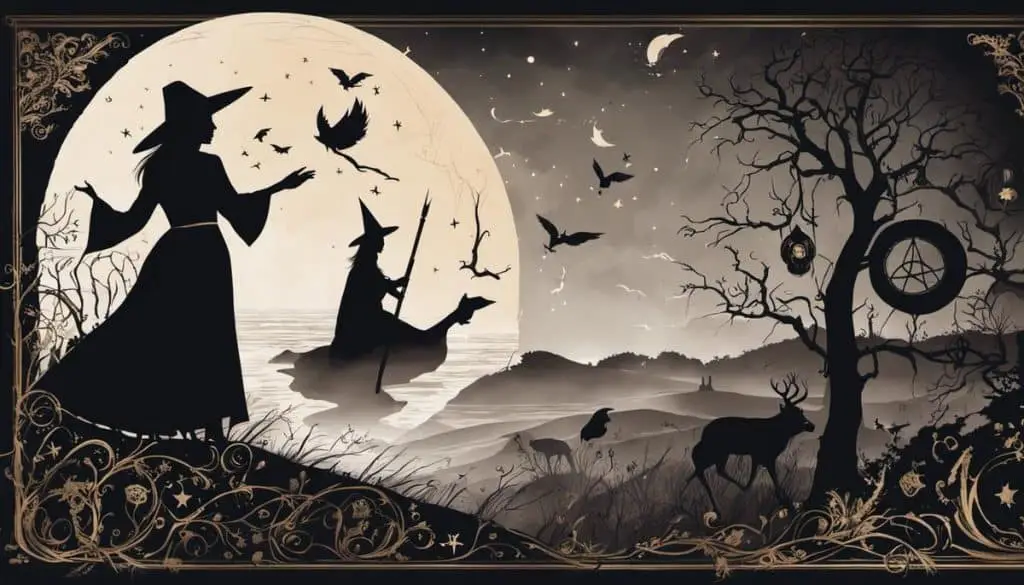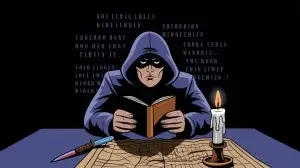Unveiling the Reality of Witches. Intriguing, mystifying, yet often misunderstood, the concept of witches secretly living among us in modern society sparks curiosity and apprehension in equal measure. The image of a witch has transposed the centuries, evolving from ancient mythology to 21st-century pop culture, revealing an undercurrent of secrecy, magic and mystery. This exploration unveils distinctive signs and characteristics potential secret witches might exhibit, traces the evolutionary journey of witches and witchcraft, delves into the mesmerizing world of spells and potions, and scrutinizes the beliefs, practices, and societal perception surrounding this enchanting yet covert community.
Identifying Secret Witches in the Modern Society
Spotting a Modern-Day Witch: Insights from a Dedicated Occult Enthusiast
Have you ever wondered about witches? No, not the fairy-tale ones with pointed hats and broomsticks, but the witches of our modern world. You’ve likely passed by one on the street, with no idea of their special set of beliefs and practices. But how do you spot one? What signs could point to someone being a witch living in our contemporary society? Let’s delve into this exciting and often misunderstood topic.
Firstly, it is paramount to acknowledge the diversity and respect the individuality within the witchcraft community. The term “witch” itself is an umbrella term that signifies an affiliation with the occult arts, spanning numerous traditions and practices.
Often, modern witches can be identified by their unique sense of style. While these choices can vary dramatically, some signs could include the use of lunar, astrological, or symbolic jewelry, and a penchant for colors typically associated with the natural world. However, it is important not to make hasty judgments solely based on appearances, as witchcraft is foremost a spiritual pursuit.
A love for nature is another common characteristic of witches. An affinity with plants, animals, and the elements is often considered key to their craft. You may notice their home or workspace adorned with plants, crystals, or statues symbolizing deities from various pantheons.
Recognizing a witch might also be possible by understanding their belief system and practices. Witches often follow lunar and solar cycles and observe ancient pagan holidays like Samhain or Beltane. This could result in them displaying behavior or dress that align with specific lunar phases or marking significant dates on their calendar.
Reflection in conversation is another way to identify a witch. They might discuss elements like ethereal energy, aura, manifestation, and a range of divination methods like tarot readings, runes or pendulum divination. The concept of magic, for them, is more about channeling underlying energies and less about performing spell-binding tricks seen in popular culture.
Next, look for a passion for seeking knowledge. Witches typically engage in continuous education, honing their craft and expanding their understanding of the occult. Their bookshelves may be filled with texts on subjects like herbalism, astrology, history of witchcraft, shadow work, and more.
Finally, be aware of the witch’s inclination to healing and nurturing activities. Many modern witches engage in professions or hobbies that promote healing, like yoga instructors, therapists, herbalists, or energy healers.
However, at the end of the day, the most reliable method to identify a witch in the contemporary society is simply through open communication and respect. If they feel comfortable, they might openly share about their practices and beliefs. Remember, the idea here is not to “out” anyone, but to enhance understanding and respect for diverse paths in our society.
So, keep your eyes and mind open as you explore the fascinating world of witchcraft. Who knows? You may discover more than just identifying witches – you may uncover a fascinating world intertwined with ours, rich in history and continuously evolving alongside modern society.
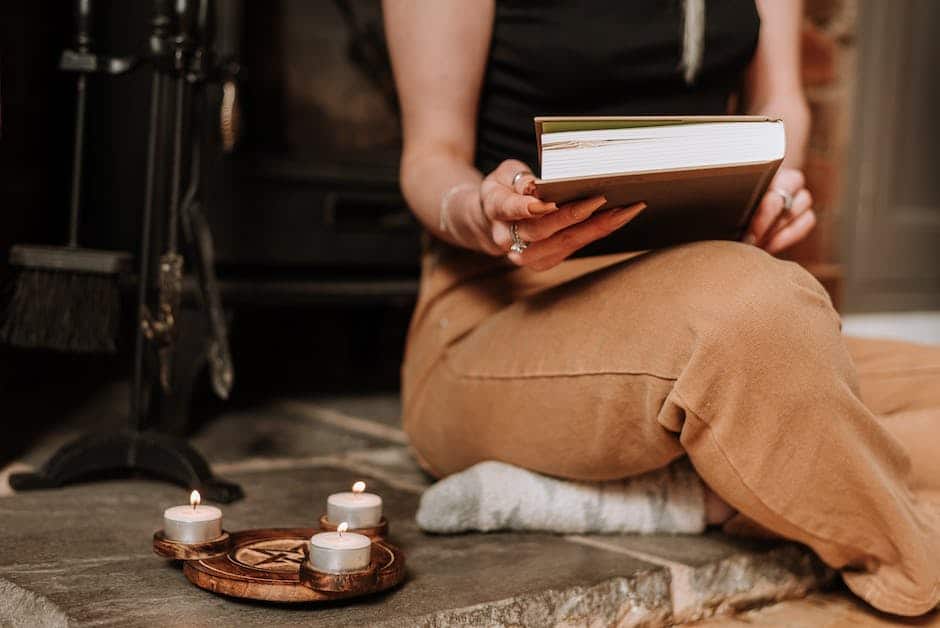
The History and Evolution of Witches and Witchcraft
The face of witchcraft and its practitioners has drastically metamorphosed throughout history. Far from cultural and mythological depictions marked by broomsticks and warty noses, contemporary practitioners hold a diverse array of views, rituals, and beliefs. The vivid tapestry of witchcraft illustrates the quintessential human journey towards self-discovery and spiritual fulfillment.
Archaeological evidence reveals ancient societies held beliefs in witchcraft and magical practices. We see witchcraft through the lens of ancient Egypt, where spells, charms, and amulets existed symbiotically with human life. The Greeks and Romans too, venerating witches as oracles with prophetic abilities, bridging the gap between mortals and divine deities.
In the medieval period, perceptions swung. Witchcraft became irrevocably marred with accusations of heresy and devil worship – the infamous witch-hunts of Europe and America remain a stark reminder. Many innocent women were persecuted based on mere suspicions – a dark chapter in history, visible even now in the collective subconscious.
With the birth of the Enlightenment era, the flame of witchcraft started flickering anew. A revival occurred, witchcraft found refuge in literature and art, paving the way for the Romantic era where magic was marveled at and admired once again.
Fast forward to the 20th century, and we see another significant shift. The 1950s and 60s marked the emergence of Wicca and Neopaganism, bringing witches back into the mainstream. These were religions deeply rooted in reverence for nature, acknowledging a male-female divinity balance, and embracing the cyclical nature of life and the universe.
In today’s era of soul-searching and spirituality, witchcraft has found an astounding renaissance. People are turning to witchcraft as a means of self-empowerment and reclaiming control over their lives. It’s about autonomous spirituality, bypassing rigid dogmatic structures and exploring spirituality as a personal, individual experience.
Platforms like Instagram and Tumblr have also played pivotal roles in witchcraft’s new wave. Witch influencers post snapshots of their crystal collections or latest tarot spreads, making the practice approachable and removing the fabled high entry barrier. Social media has become a tool for witches worldwide to connect, learn from one another, and further strengthen this evolving community.
From hobby to lifestyle, from the occult to mainstream, the concept of witches and witchcraft has evolved parallelly, reflecting societal changes and challenges. It serves as a testament to witchcraft’s resilience and adaptability, constantly morphing to fit the ever-current narrative and needs of society. Though witchcraft’s journey contains dark patches painted by fear and misunderstanding, its shared story is, in essence, a tale of survival, transformation, and continuous reinvention.
One can’t help but wonder, observing the arc of history, where will witches and witchcraft journey next, with the rising sun of tomorrow?
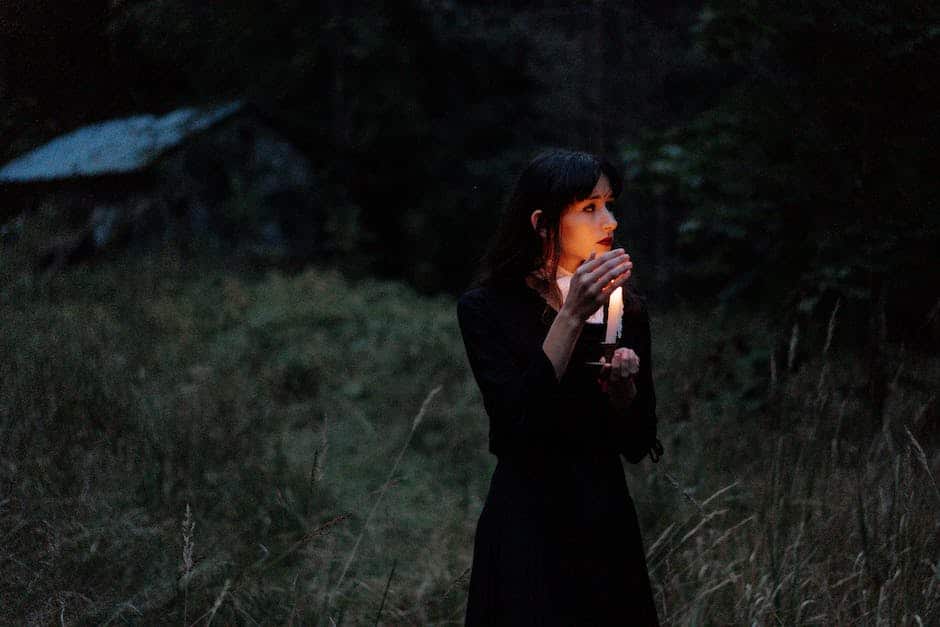
The Magic of Secrecy: Spells and Potions
At a glance, the craft of spells and potions may seem like something straight out of a fairy tale or fantasy novel. But peel back a layer to really delve into the underworld of witchcraft, and you’ll soon discover how this intriguing practice is deeply entrenched in reality. How, you wonder? The answer lies in the use of spells and potions to maintain the secrecy that shrouds the lives of witches.
In the vibrant world of witchcraft, a spell is much more than just a whimsical chant or an enchanting incantation. It’s a manifestation of intention that harnesses the energy around and within a witch to bring about change. On the other hand, potions are about blending nature’s bounty into magical brews empowered by a witch’s intentions.
But how do these tools aid in maintaining their secrecy? The answer lies in the craftsmanship of it all.
For one, spells and potions aren’t overtly conspicuous or obviously magical in appearance. They can blend seamlessly into the mundane conversation, losing themselves in a sea of ordinary household chores or simple culinary practices. And so, with their inconspicuous nature, they act as a perfect disguise to witchcraft, allowing witches to practice their arts without drawing unnecessary attention.
Spells, in particular, are a blend of eloquence and enchantment. They work in whispers and denial, granting anonymity to those who wield them. By intertwining everyday language with the interpretation, delivery, and timing of spells, witches skillfully safeguard their activities from prying eyes. Thus, the craft of spell-making affords the witchcraft community the privilege of dispersing magic while remaining unnoticed.
As for potions, their magic lies within the ordinary. Potions often incorporate everyday items, such as herbs, oils, crystals, or even common kitchen ingredients, which makes them virtually indistinguishable from benign concoctions or herbal remedies. To disguise their magic further, these potions can be cleverly incorporated into daily routines, like skin care regimens, meals, or relaxing baths.
This art of camouflaging in the common and familiar allows witches to subtly disperse magic into the world while remaining inconspicuous, maintaining the balance between embracing their craft and upholding their secrecy.
But beyond the concealment of their craft, spells and potions also serve to maintain secrecy within the witchcraft community itself. The sharing of potion recipes or spell instruction is often reserved for only trusted members within the witch’s circle. These practices serve to enhance community bonds, sustain sacred traditions, decrease misinterpretation by outsiders, and safeguard sensitive knowledge from potential misuse.
Finally, the ability to craft spells and potions is not typically accessible to every individual. Becoming proficient in witchcraft may require years of dedication, continuous learning, exploration, and practice. This steep learning curve acts as a natural barrier, preserving the world of witches from the uncommitted or merely curious, and further safeguarding their secrets.
In conclusion, the artful mastery of spells and potions is an essential key to maintaining the secrecy of witches. In their crafty blend of ordinary with extraordinary, in the whispers of spell and disguised potion, lies the very heart of witchcraft’s elusive masquerade.
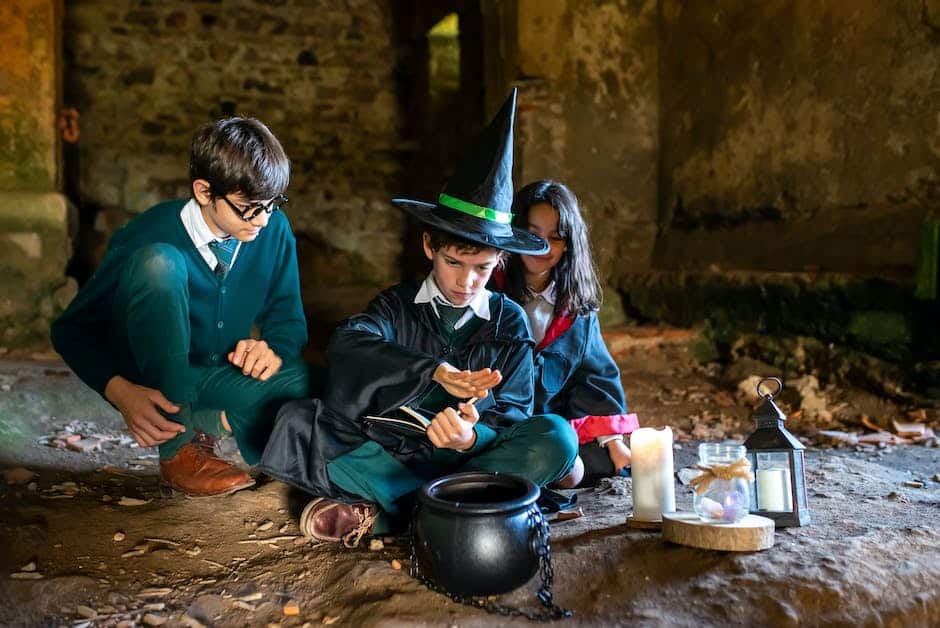
A Glimpse into Witchcraft: Beliefs and Practices
Delving further into the practices of modern-day witches, spell-crafting is a defining, yet often misunderstood aspect. Spells aren’t just the stuff of fantasies and fairy tales. Instead, they are deeply intentional ritualistic actions. They are essentially a focused intention, a powerful permanent invitation or discontinuation of energies to bring tangible changes. Through these meticulously orchestrated rituals, witches attempt to manipulate the world around them, transmuting energies to align with their intentions.
Related to spells, but distinct in their own way, are potions. Concocting potions harks back to the time-honored witching practice of herbology. Like a cross between holistic medicine and spiritual cleansing, potions carry the integral respect for the nature that fuels much of modern witchcraft. These brews incorporate elements of the plant kingdom, drawing upon the energy, healing properties, and potent symbolic meanings of various herbs, flowers, roots, and even bark.
Another significant aspect of witchcraft is its inherent secrecy. This closed-off nature is not due to malicious intent, rather it’s a historically required precaution. Witch crimes of yesteryears still send the echoes of caution to the witching community. This secrecy is often maintained through coded language, symbols, and other subtleties. This tradition of veiling one’s practices not only shields the practitioner from possible harm but also adds an extra layer of intrigue and power to witchcraft.
Furthermore, the involvement in witchcraft isn’t merely dabbling in the hobby. Instead, it signifies a dedicated initiation into this esoteric world. Witchcraft demands exclusivity, absolute concentration, and commitment from its practitioners. It’s not as much about joining an exclusive club as it is about aligning oneself with certain energies and a path that seeks deep connection with self, nature, and the universe.
In conclusion, the realm of modern witchcraft is a complex tapestry woven of diverse beliefs, practices, and historical influences. From understanding the essential role of nature, the importance of spells and potions, to the need for secrecy and dedication, diving into witchcraft is like stepping into a richly mystifying world. It’s an exploration that is as illuminating as it is transformative, as challenging as it’s empowering. As intense and as mysterious as the journey is, the destination makes it all worth it – a closer, more intimate relationship with oneself and the world around.
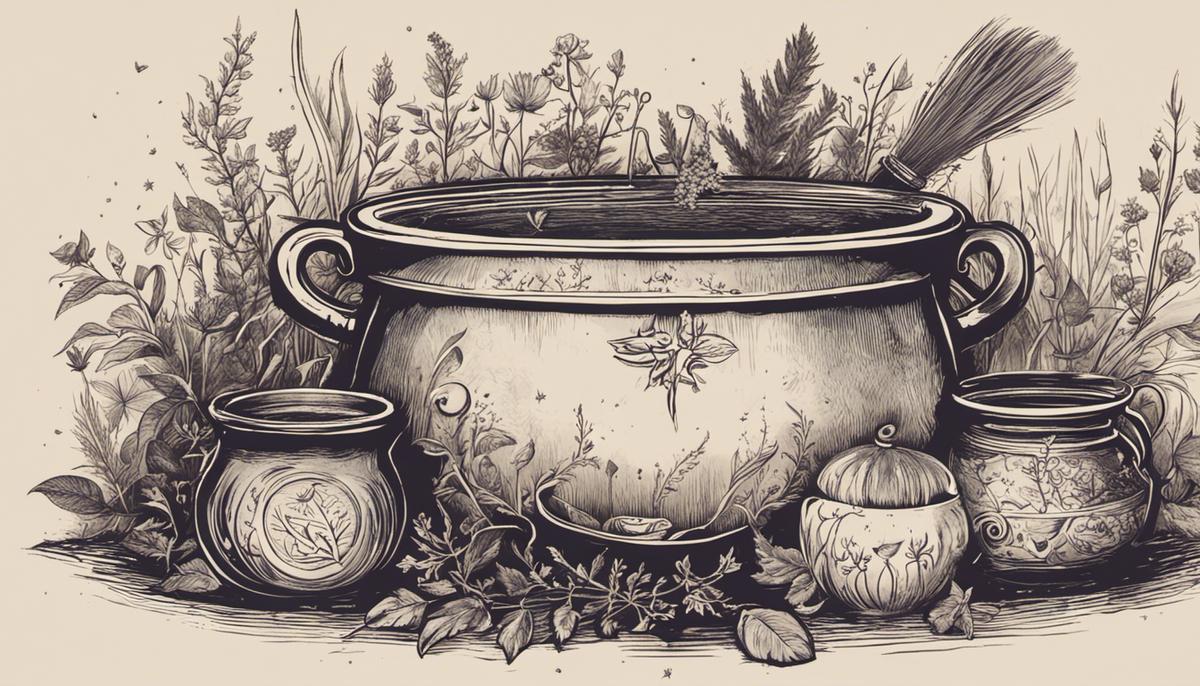
Witch Community: Societal Perception and Reality
Further exploring the complex world of witchcraft shines light on several interesting facets that further complicate the stereotype. The intricate systems witchcraft involves, like divination, astrology, and ancestral reverence, play critical roles in a witch’s practice.
Divination, for instance, is an integral part in navigational systems for witches. This technique involves various methods such as tarot reading, crystal gazing, runes, and I Ching to foresee the future, hunt for wisdom, or seek spiritual advice.
Astrology, another encompassing part of a witch’s life, helps establish a deeper connection between them and the celestial realm. Detailed natal charts often guide practitioners in their daily lives by providing insight into their characters, potentials, and challenges.
Ancestral reverence, an underemphasized but equally important aspect, is often incorporated into a witch’s practice. Connecting with forebears, ancestors, or spirit guides anchor witches to their roots and provide them guiding wisdom.
The practice of witchcraft extends far beyond the solitary confinement of one’s home. It includes practices like earth walking, also known as ‘witch’s foot,’ that enhances a witch’s connection to the earth and its energies. It involves intentionally walking barefooted on natural grounds to absorb the Earth’s natural energy and vitality.
Beyond these practices, a huge part of witchcraft lies in community engagement, more so than most would assume. Covens or community gatherings in witchcraft share equal importance with individual, solitary practices. They provide a safe space for sharing experiences, learning, and cultivating profound respect and understanding for each other’s journey in the craft.
Tackling the realm of online witchcraft, one would be surprised to discover immense virtual communities. Online platforms like Witchtok, YouTube, and various witchcraft blogs and forums are thriving, offering resources, techniques, spells, and interactive forums for witches. These platforms have transformed witchcraft, making it more accessible and breaking down barriers that once limited practice and bonding within the community.
Lastly, one shouldn’t overlook the prevalence of witch activism. Witches often find themselves at the forefront of societal changes and are ardently vocal about environmental conservation, social justice, and equality. Witchcraft often drives the witch’s perception of world issues, resulting in commitments to make changes and fight injustices.
Witchcraft, as most of us would surmise, won’t be simplified to a monolithic practice or counterculture. It is not about broomsticks, pointy hats, nor doing evil. It is variegated, embracing a plethora of connections to one’s self, to others, to nature, and to the universe. On this explorative voyage into witchcraft, remember, always tread with open minds and respectful hearts.

Ultimately, the reality is that witches, with their unique customs, practices, and perceptions, remain an enticing curiosity in our world. As society continues to evolve, so does our understanding of this captivating, clandestine community. Our journey through the many facets of witchcraft and their secretive existence has perhaps dispelled some stereotypes and misconceptions, bringing clarity to a subject shrouded in mystery. Knowledge allows us not only to see but to understand, providing the essential bridge between fear and acceptance. Now informed, we, the members of this society, perhaps stand at the confluence of fact and fiction, perception and reality, ready to dispel the fear of the unknown and embrace the magic of diversity.
Steve is the creative force behind My Unique Tales, a blog dedicated to sharing captivating stories that explore the human experience in all its complexity. With a passion for writing and a talent for crafting engaging narratives, Steve's blog is a treasure trove of imaginative tales that transport readers to other worlds and challenge them to see things from new perspectives. From epic adventures to intimate character studies, Steve's stories are always thought-provoking and emotionally resonant. With a growing following of readers who appreciate his unique voice and creative vision, Steve is quickly becoming a rising star in the world of online storytelling.

